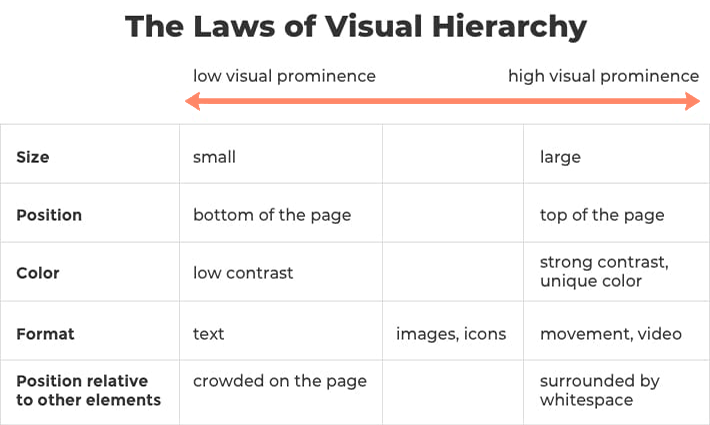First impressions matter. If you aren’t taking the development of your website seriously, you’re making a big mistake. But being serious about someone’s first experience with your brand doesn’t mean you have to be dull or boring. Web design is exciting because it offers unlimited style possibilities that let you bring your business to life online.
While the stylistic choices for your website are important, the way the user experiences and interacts with it should be the priority — whether building a new site or redesigning an existing one.
Here are five tips that are crucial to your website and the user experience:
Visual Hierarchy
Everything you see, from magazines, to billboards to webpages, has a visual hierarchy whether you’re aware of it or not. Visual hierarchy is the order in which your eyes see elements on a page.
Use this principal to your advantage by adjusting the size, color and spacing to guide the visitor’s eye to the most important items.

Get Rid of Dead Ends on Your Site
Think of dead ends like roadblocks that can exist throughout your site. These distract the user and interrupt the flow through your site.
Dead ends can come in the form of broken links resulting in a 404 error. The best solution is to fix or remove all broken links, but, at the very least, make sure you set up a 404 page that prompts the user to go back to the previous page they were visiting.
Other dead ends are less obvious, such as a user scrolling through a page only to find it abruptly ends with no call to action or direction on where to go next. In an ideal world, the user will scroll back to the top to find another page that interests them, but, as you probably guessed, that rarely happens. This typically results in a user leaving your site to find another within seconds. These dead ends are even more important because usually they’re not as obvious.

Know Your User Flow
Knowing your user flow allows you to lead visitors through the site, typically ending with a conversion. This relies a lot on your visual hierarchy and eliminating all dead ends.
As you’re designing, think about what you want to grab the user’s attention first, then ultimately where they will be led. If you are redesigning an existing website, there are tools available that allow you to see a heatmap of your site that shows where people are pausing and clicking.
Words Matter (Keep It Simple)
When designing a new site, a lot of people focus so heavily on the design elements that they forget about the content itself. Words and the way they’re presented matter still matter.
When coming up with headlines and other copy, try to think about who your user is. How do they talk? Not only will this improve your organic SEO, but it will also allow them to comprehend your content much easier. Try not to use big words when it isn’t necessary. While it might make you seem smart, it may make your visitor feel the opposite.
Another thing to be conscious of is paragraph length.
“Short paragraphs get read, long paragraphs get skimmed, really long paragraphs get skipped.”
– Jason Fried, Founder and CEO of Basecamp
Make Mobile a Priority
Lastly, don’t neglect other screen sizes. We’ve all heard it time and time again, but it’s true. Each year, more and more of the internet is being viewed on a phone or tablet. If your website isn’t optimized for these other screen sizes, it’s going to create a clunky and poor user experience.
There are endless tips we could give when it comes to good web design. These are just some of the ones that are overlooked more times than not. Do you agree with these points? Or do you have web design tips you’d like to add? Leave a comment below.
If you have any questions or would like to work with us to build your new website, click the button below to get in touch.


